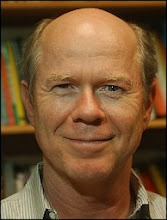Neurofeedback: An ADHD Treatment That Retrains the Brain?
This is a summary of Megan Johnson’s report found in the December 2009 edition of US News & World Report. Neurofeedback, also called EEG biofeedback, has been under investigation as a treatment for epilepsy and ADHD since the 1970s. Studies suggest that in ADHD, the brain generates insufficient beta waves, which are associated with focus and attention, and an overabundance of lower-frequency theta waves, produced during periods of daydreaming or drowsiness. Praising and rewarding a child when he steps up production of beta waves by concentrating on the game or movie should therefore teach him how to focus at will in other settings, such as doing homework assignments or cleaning his room. And at least for some children, that seems to have happened. The article goes on to report how one child after 60 neurofeedback sessions had his reading scores jump up from second- to fifth-grade level, and his IQ scores jump from low average to high average. He later graduated from college. While neurofeedback works in theory and has had anecdotal successes, it was largely dismissed by ADHD experts until recently. Newer research has begun to build a promising foundation. A German study published earlier this year, which found that neurofeedback improved attention and reduced impulsivity and hyperactivity, was fairly large (94 children ages 8 to 12) and included a control group. Fifty-nine of the children received 36 sessions of neurofeedback over three to four weeks, while the other 35 children were trained in a different technique designed to improve attention. Observations by the children's parents and teachers indicated that most kinds of ADHD-related behavior improved much more in the neurofeedback group than in the control group. The study and 14 others were analyzed in the July issue of the Official Journal of the EEG and Clinical Neuroscience Society. Ten of the studies, involving a total of nearly 500 children, used a control group. "The clinical effects of neurofeedback in the treatment of ADHD can be regarded as clinically meaningful," the authors concluded. Still, as evidence of benefit accumulates, increasing numbers of parents will ask themselves whether neurofeedback may be worth trying. The question is whether the expense is justifiable. Forty to 60 sessions, typically costing $100-130 per session, are generally recommended; most health insurance plans consider neurofeedback an alternative treatment and will not cover the expense. Drug treatment can be more expensive over the long run—about $180 a month for some stimulants—but generic medications can cost as little as $10 a month. Kids might go five to eight years on medication before reaching the amount spent on neurofeedback. And if the family has health insurance, most plans cover much of the cost of drugs. While many practitioners envision neurofeedback as a drug-free solution, others see it as a complement to drug therapy. Neurofeedback alone does not produce the immediate and dramatic results of medication. The catch with drugs is that many children stop taking them. In one large study, more than 60 percent of the children on stimulants discontinued them within eight years. Parental concern may be a factor—side effects are not uncommon, and lately some of the drugs have been linked to stunted growth. That's why Kim Sanders of Aubrey, Texas, decided to try neurofeedback a few years ago with Macy, now 15, and Trent, 14. The stimulants they were taking for their attention disorders, says Sanders, inhibited their growth. She has seen a "night and day" difference in Trent's behavior and a "remarkable" improvement in Macy's performance in school. They no longer take medicine. To read the full article, go to http://health.usnews.com/articles/health/brain-and-behavior/2009/09/10/neurofeedback-an-adhd-treatment-that-retrains-the-brain.html


0 Comments:
Post a Comment
<< Home